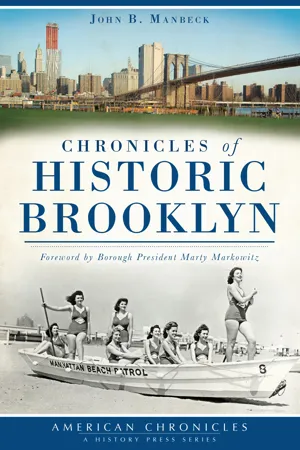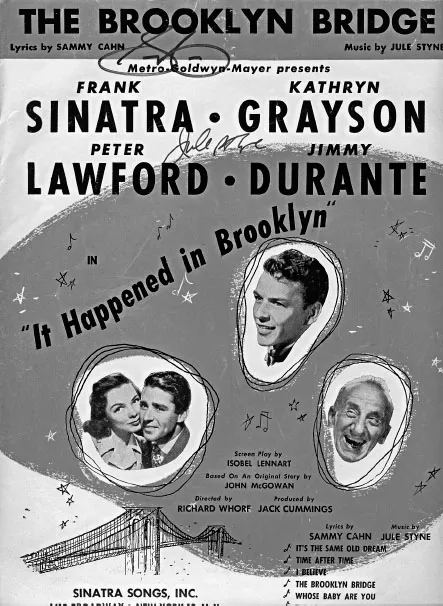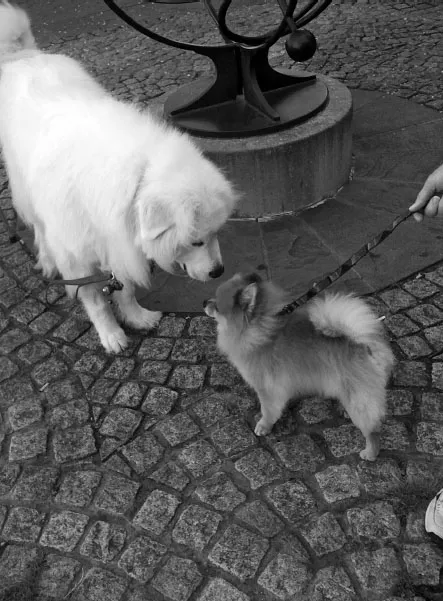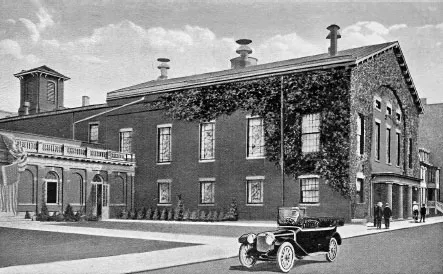
This is a test
- 163 pages
- English
- ePUB (mobile friendly)
- Available on iOS & Android
eBook - ePub
Chronicles of Historic Brooklyn
Book details
Book preview
Table of contents
Citations
About This Book
Brooklyn has always been a place of diversity and distinction. These qualities are everywhere across the borough, from its people to its events, landmarks, and more. In Chronicles of historic Brooklyn, Borough Historian John Manbeck has collected the stories that reveal the history and spirit of this ever-growing metropolis.
From stories of murderous pirates who once besieged Sheepshead Bay to tales of the still-beloved Brooklyn Dodgers who played at Ebbets Field, Manbeck traces the long and colorful history. Explore the forgotten neighborhoods, iconic parks, vanishing waterfront and other attractions that show how and why Brooklyn has endured.
Frequently asked questions
At the moment all of our mobile-responsive ePub books are available to download via the app. Most of our PDFs are also available to download and we're working on making the final remaining ones downloadable now. Learn more here.
Both plans give you full access to the library and all of Perlego’s features. The only differences are the price and subscription period: With the annual plan you’ll save around 30% compared to 12 months on the monthly plan.
We are an online textbook subscription service, where you can get access to an entire online library for less than the price of a single book per month. With over 1 million books across 1000+ topics, we’ve got you covered! Learn more here.
Look out for the read-aloud symbol on your next book to see if you can listen to it. The read-aloud tool reads text aloud for you, highlighting the text as it is being read. You can pause it, speed it up and slow it down. Learn more here.
Yes, you can access Chronicles of Historic Brooklyn by John B Manbeck in PDF and/or ePUB format, as well as other popular books in History & North American History. We have over one million books available in our catalogue for you to explore.
Information
Part I
HISTORY
History Has Many Layers
April 15, 2002
Every person has a history. Our life stories become history. History is memory and is captured in genealogy, the history of our families. This study of our ancestors has grown increasingly popular in recent years. Libraries, archives, historical societies, genealogical organizations and historians process more and more requests in a search for our identities.
History is not buried in the past. The Delaware Indians left us with their names. Gowanus was a variation of an Indian chief’s name. Canarsie was a sub-division of the Delaware nation. The Dutch traders who settled in Brooklyn gave us the name of the borough and its neighborhoods: Flatbush, New Utrecht, Greenpoint and Bushwick. They further enriched our language with words such as “stoop” and “boss.” The English, who defeated the Dutch, brought in “Gravesend,” “Kings County” and “New York.” Each new ethnic group introduced new words and customs that enriched our language and culture.
We have adopted and adapted without realizing it. A neighborhood that was once German became Jewish, then Irish, then Italian and then Chinese. It’s also known as the Lower East Side or the East Village. Each of these peoples brought its own history. I call it a “layered history.”
In the nineteenth century and even more recently, many reactionaries were so afraid of change—of history—that they wanted to stop it. These people called themselves Nativists. They felt that America was for Americans and that they were the only pure Americans. They identified with the “Know Nothing” political party; they didn’t want to know their own history. Their story has been told in Herbert Asbury’s informal history The Gangs of New York, in which “American” gangs fought the immigrant Irish gangs.

Brooklyn Borough Hall, 1942. Photo by Edward Rutter. Brooklyn Public Library, Brooklyn Collection.
Scare tactics still abound. Race and hate crimes reflect this mentality just as the draft riots of the Civil War did when blacks were lynched in New York and Brooklyn because they were seen as a threat to the white economy.
A study of layered history shows that diversity allows us to profit from history. The largest West Indian parade in the world takes place in Brooklyn each Labor Day weekend. It is our Mardi Gras, a wealth of joy and entertainment that would be lost if modern immigration were halted. In Williamsburg, the festival of the giglio allows us to observe an Italian Roman Catholic procession. The many Jewish holidays, both religious and festive, bring us new historic insights.
In addition to celebrations, foods and dress also enlighten us. When I was a child, pizza was foreign in my Brooklyn neighborhood. Now, pizza is delivered in boxes emblazoned with American flags. Mexican foods? Maybe in Texas or California, but certainly not in Brooklyn. All Chinese food was generically categorized as “chop suey.” Certainly, no one knew what Arabs ate. No one would have thought of eating at a Thai, Indian or Indochinese (Vietnamese) restaurant.
Even today, while our tolerance has expanded, too often our thoughts of history are limited to images of men with white wigs and white faces. The Brooklyn Historical Society, Brooklyn Public Library, Brooklyn Museum, local historical societies and the borough president’s office have taken steps, but we remain too provincial in Brooklyn. A more concerted effort must be made to include the history of all Brooklynites in our official layered history.
A Swell Party for the Brooklyn Bridge
May 29, 2008
“One hundred and twenty-five years old?”
“Why, it seemed like just yesterday she was born!”
“Doesn’t look her age.”
“My, my, how time flies!”
Star of stage, screen and legend, the Brooklyn Bridge—née the Great East River Bridge—posed for her birthday party the weekend of May 24 (with a preview blowout May 23 featuring candles, fire pyrotechnics, orchestral fanfare and all.)
A few of her starring roles in over twenty-two films include It Happened in Brooklyn (remember the love song “The Brooklyn Bridge”?) and the more recent Enchanted, although hosts of others from A View from the Bridge to Bugs Bunny can be found in her portfolio, including a script by F. Scott Fitzgerald written for Columbia Pictures in 1940 but never filmed. And you can add to those movies eight plays, several television tributes, over fifteen songs and more than twelve books, not to mention countless photographs and other visual arts.
And still she stands there ready for her profile, unbending as steel, solid as a rock. Loved but from a distance (at 113 Columbia Heights) by Colonel Washington Roebling, only thirty-two years old when he succeeded his father as builder. Remember her welcoming celebration? Wasn’t she a beauty? Hasn’t lost a bit of her charm. That was back in ’83—1883, that is.

The Brooklyn Bridge song sheet autographed by the composers. Photo by John Manbeck.
Honored by the president of the United States (Chester Arthur), three governors (New Jersey, Rhode Island and New York—future president Grover Cleveland) and two mayors. Speeches, speeches, speeches to fifty thousand spectators. Three hours of speeches on peace, courage, science and commerce. But not by the president.
And then the fireworks—one hour of pyrotechnics from the bridge’s towers and her center span. Fourteen tons of fireworks with over ten thousand pieces and five hundred rockets, all supplemented by a full moon. Fireworks supplied by Detwiller & Street Co.; the moon sponsored by the heavens. For subsequent lighting, pedestrians would be satisfied with the electric lights.
In Brooklyn, Mayor Seth Low (who had attempted to have Washington Roebling fired from the job in 1883 yet declared, “No one who has ever been upon it can forget it.”) declared May 24 “The People’s Day,” an official Brooklyn holiday, and mounted flags in each of Brooklyn City Hall’s 120 windows. New Yorkers, on the other hand, assumed the bridge would be a one-way street to Manhattan.
And later, the bittersweet wedding in 1898 when the bridge became a bride connecting the cities of Brooklyn to New York. To follow were the offspring of Williamsburg, Manhattan and the wayward Verrazano. In 1883, pundits predicted that over one hundred bridges would cross the East River a century later.
Genealogy dates the bridge’s inception back to John Roebling, Washington’s father, who had experimented with the Delaware Aqueduct, a suspension bridge for the Delaware & Hudson Canal and Gravity Rail Road to float barges from Pennsylvania down the Hudson to Brooklyn’s Erie Basin, plus at least half a dozen other bridges. Other godfathers included James Stranahan, midwife of Prospect Park; Henry Cruse Murphy, founder of the Brooklyn Eagle; William Kingsley, Eagle editor; and Andrew Haskell Green, promoter of New York City unification.
When the Brooklyn toll booths opened at 11:20 p.m. (toll: one cent), everyone joined the festivities: H.D. VanKeuren paid the first toll; Mrs. C.G. Peck became the first woman to cross; and Charles Overton of Coney Island drove the first vehicle, a horse-powered wagon. The New York Times recorded the first beggar, the first drunk, the first policeman, the first hearse, the first “dude” and the first “negro.” The first musician was a Scottish bagpiper among the 150,000 who crossed that day. Robert Odlum was the first to jump from the bridge (unsuccessfully); Steve Brodie never did. Paul Boyton, later of Coney Island and Sea Lion Park fame, attempted to rescue Odlum.
While the bridge was intended to replace the thirteen ferries, the last ferry line ran until 1942.
The heroine of the fairy tale, Emily Roebling, who transmitted her husband’s missives to the workers for six years, died at fifty-nine. Her invalided husband outlived her to age eighty-nine, dying in 1926.
Then the spectacular centennial celebration in 1983 with more fireworks—this time by Grucci—and an interborough festival.
Here’s to the Grand Old Lady! May she live to be one thousand!
All Things Brooklyn
February 24, 2012
Have you noticed how “Brooklyn” has slipped into being a trade name? The Times did a few months ago. Ran a feature story on how Manhattan clubs, pubs, foods and tchotchkes flaunt the “Brooklyn” label. In other words: Brooklyn sells.
Initially, the word evolved from “Breuckelen” into Brookland. Then a few other adaptations slipped in (Brockland, Brookline and Brocklin) before our burghers finally settled on Brooklyn. Whereas the word promoted local pride in its formative years, it instilled confusion and even fear in the twentieth century. The local dialect added to the chaos. Strangers became hopelessly entwined in the monotonous repetition of street names and the mangled syntax of the natives.
But the local charm was exported by our expatriates, who often transplanted the place name to new communities. Not only in America but also around the world. At the same time, population of the borough grew so that the county of Kings is the largest in New York State.
But as of the twenty-first century, popular opinion has changed. Brooklyn has developed an etymology and a Latin derivative: brooklynensis meaning “of or relating to Brooklyn.” Suddenly, the name has become a cachet. In the popular media, characters named Brooklyn romp through the pages (and e-books) of children’s literature. Then a Broadway musical with the abbreviated title Bklyn and a lead character named Brooklyn opened and stayed around awhile. Wasn’t it bad enough that the hot dogs outside New York City are called coneys?
Now it is accepted as a proper female name, sometimes spelled “Brooklynn,” “Brooklynne” or “Brooke Lynn.” Not at all unusual. Other female place names are familiar; Brittany, Chelsea, Erin, Paris and Shannon come to mind, so why not Brooklyn? Online, a baby was christened Brooklyn Skye—two place names. According to the baby name website BabyHold, “Brooklyn” even has a meaning: water, stream.

Brooklyn, a Great Pyrenees, talking to Bandit, a Pomeranian. Photo by John Manbeck.
Most consider Brooklyn a name for a girl, but David Beckham’s son is named Brooklyn. Among girls, the name has broken the top one hundred since 2008, according to thinkbabynames.com. Even a Brooklyn Bridge popped up.
Of course, Borough President Marty Markowitz recognized the salability of the name when he invited supermodel Brooklyn Decker to his State of the Borough ceremony. Not that she’s a native, but it’s the name that counts. On the other hand, I read that she hails from Ohio (and North Carolina) and that she was named after a horse, Brook. It’s just a touch of show business to add the suffix “lyn.” She could have taken the name from a local dog, a three-year-old Great Pyrenees named Brooklyn. He loves the name as well as all this winter’s snow.
Part II
CLASS AND CULTURE
Brooklyn Heights Association
March 4, 2010
Years ago, the Brooklyn Borough president’s office compiled the celebratory book The Brooklyn Century. The twentieth century witnessed many memorable events, including the twenty-five-year tenure of Borough President Howard Golden not to mention several wars. But one of the most dominant events turned out to be the creation of the Brooklyn Heights Association (BHA), one of Brooklyn’s oldest neighborhood associations.
Neighborhood associations, as opposed to homeowners’ associations, have a distinctive difference with legal and financial ramifications. Dean Alvord developed Prospect Park South in 1892 on land purchased from the Flatbush Dutch Reformed Church. By 1905, the residents had established the Prospect Park South Neighborhood Association, which publishes a newsletter and maintains garden malls in the vicinity. Residents there promote a rivalry with the Heights, citing their large lawns and parking spaces. It still functions as the borough’s oldest neighborhood association.
Although Brooklyn Heights antedated Prospect Park South to become Brooklyn’s first suburb and first landmarked neighborhood, the Brooklyn Heights Association that formed in 1910 created an active presence that preserved the brownstone bedroom community. The presence of the many hotels indicated that Brooklyn Heights served as a hub of finance and commerce.

Postcard of Plymouth Church. Author’s collection.
This year’s centennial celebration opened on January 20 with a salute from Borough President Marty Markowitz and a film tribute composed of excerpts from major films shot on the streets of the Heights and hosted by director Peter Hedges. Included in the montage were scenes from Without a Trace, with backgrounds of older Montague, Remsen and Henry Streets; Moonstruck, with shots of Cranberry Street; Burn After Reading, with Middagh Street standing in for Washington’s Georgetown; and Catch Me If You Can, with the Municipal Building substituting for Chase Manhattan Bank. Scenes from The Sentinel sparked gasps as realtor Ava Gardner at the end showed the modern high-rise that (in the film) replaced the mammoth Remsen Street mansion on the Promenade.
The highlight of every year remains the Landmark House and Garden Tour, an entrée to the private brownstones and frame houses of the Heights. Added to that this year will be a special exhibit at the Brooklyn Museum, a fall party at the Plymouth Church to celebrate the Brooklyn Bridge and a holiday pub and restaurant...
Table of contents
- Front Cover
- Half Title
- Title Page
- Copyright
- Contents
- Foreword
- Introduction
- Part I. History
- Part II. Class and Culture
- Part III. Sports
- Part IV. You Gotta Have Park
- Part V. Food and Drink
- Part VI. Breuckelen: Old and New
- Part VII. Holidates
- Part VIII. Hard Times
- Part IX. Media
- Part X. Lost Brooklyn
- Part XI. Brooklyn Crime
- Part XII. Brooklyn Goes to War
- Part XIII. Coney Island
- Afterword, by Henrik Krogius
- About the Author